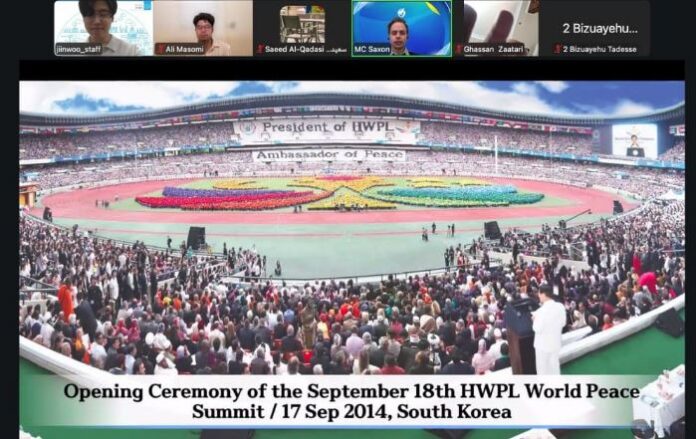In a time when social divisions and online conflicts often dominate headlines, a group of journalists from across the globe gathered to discuss one essential question — how can the media become a true bridge for peace?
On October 18, 2025, the international peace NGO Heavenly Culture, World Peace, Restoration of Light (HWPL) hosted an online workshop titled “Beyond Conflict to Harmony: Peaceful Media, Connecting the World.” The session explored how media professionals can help heal divisions by practicing balanced, ethical, and empathetic reporting.
At the heart of the discussion was Article 9 of HWPL’s Declaration of Peace and Cessation of War (DPCW) — a clause that emphasizes religious and ethnic harmony.
This principle, though written as an international peace standard, was reinterpreted by journalists as a moral guideline for their everyday work.
Participants discussed how reporting on religion and ethnicity often shapes public perception — and how responsible journalism can prevent misunderstandings that may otherwise fuel conflict.
The event also highlighted HWPL’s International Religious Peace Academy (IRPA), which connects journalists from different faith and cultural backgrounds to produce joint stories on interreligious dialogue. Through these collaborations, HWPL aims to strengthen the role of media as an educator for peace rather than a messenger of division.
Following the presentation of HWPL’s achievements over the past 11 years, the focus of the event was the regional discussion sessions, Oceania, the Middle East, and Africa.
In Africa, journalists spoke about “conflict-sensitive reporting,” emphasizing the importance of language — avoiding terms that inflame ethnic or political tensions.
In the Middle East, participants reflected on how Article 9 could serve as the foundation for future journalist training programs to bridge long-standing divides between religious communities.
In Oceania, speakers noted that even in multicultural societies, peace journalism requires more than coexistence — it demands empathy and a shared editorial vision that nurtures inclusiveness.
Bizuayehu Tadesse Werkelule, an Ethiopian journalist of Amhara Media Corporation shared his personal commitment: “As a journalist, I wish to leave a voice that builds bridges, not walls. I aim for my reporting to amplify the voices of peacemakers, focus on solutions rather than just problems, and contribute to a more informed and empathetic global community”.
The October 18 online workshop followed in the spirit of the 11th HWPL World Peace Summit held a month earlier in Cheongju, Republic of Korea, where over 800 global leaders reaffirmed their commitment to lasting peace.
In particular, HWPL’s Declaration of Peace and Cessation of War (DPCW) continued to gain momentum, with parliamentary bodies across Latin America, Asia, and Africa adopting resolutions in its support.
HWPL’s peace education was also institutionalized into public school curricula in countries such as Zambia and Mongolia, while the launch of the Solidarity of Religions’ Peace Committee (SRPC) strengthened interreligious collaboration worldwide.
Following the workshop, HWPL announced plans to launch biannual forum beginning with pilot collaborations with journalists from Ethiopia, Egypt, Palestine, and Australia who participated in the forum. HWPL seeks to develop a sustainable media network that advances responsible journalism and supports the institutionalization of peace.




